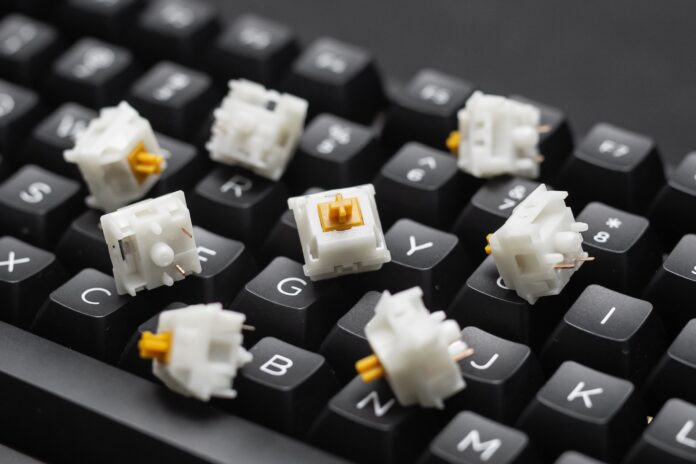What are Managed & Unmanaged Switches:
Do you know what a managed switch, UTP cable or port is? Local area Ethernet networks use varied hardware, including switches. These devices receive and transmit messages to other devices on the same LAN. By connecting devices effectively, they ensure efficient transmission of data across your LANs. They vary based on their ports, materials or other factors, although they broadly feature two types – managed and unmanaged switches.
The work of an Ethernet switch is to effectively transmit data between devices on the local area network. The switches receive a message from a target source and they forward it to the intended device, thereby ensuring an effective data transmission between devices on a LAN. This can be done using various networking hardware that ensures connectivity to these devices.
Based upon their features such as port numbers or materials used for its production, there are basically two types of Ethernet switches – unmanaged//managed switches. What does an unmanaged switch do? An unmanaged switch is known for its simplicity in operation and ease of installation. It operates without needing any configuration; hence its name ‘unmanaged’. You don’t need any special software or accompanying manual to learn how to use it – it’s plug and play. They have only 8 ports at the maximum per switch, so if you want more than that, then go for managed switches.
History of Switches:
In the early days of mobile technology, all phones were ‘mobile’, but your first mobile phone would have been very limited in its capabilities. It probably wouldn’t have allowed you to connect keyboard accessories, for example – or maybe it couldn’t make calls outside of 2G coverage. Compare that with feature-rich smartphones today that can run hundreds of apps and seamlessly display high-definition graphics on their HD displays. The differences are obvious:
smartphones need to be intelligent in a way that mere mobiles can’t emulate because they have different purposes! Used well, managed switches play an important part in getting the most productivity out of your team by keeping everyone connected and safe at all times, but this only works if the right devices are used in the right places.
In the realm of networking, one might ask themselves whether they’re better off with a managed switch or an unmanaged switch. What is the difference between these two different kinds of switches? It all comes down to price and performance. Since managed switches offer more features than unmanaged ones, they are more expensive. Let’s see the features of Manages vs Unmanaged Switches.
Unmanaged Switches:
Switches are almost like the managers or assistants of companies or businesses. They take on a role that allows them to be the link between computers, devices and other equipment in an office so that they can communicate with one another. Unmanaged switches, as you may call them, aren’t super intelligent. They play a role in communications just like how assistants act as being part of the team but also not being part of the team at the same time due to having no say when is it necessary.
Managed Switches:
A managed switch makes it possible to manage, configure, monitor and troubleshoot issues with your network. It has a unique IP address for identification and addressing. It can be used to create traffic controls, prioritize channels depending on the importance of the data being transferred, investigate performance problems, remotely deploy fixes and even create new virtual networks for segmentation purposes if needed. It’s also capable of providing optimal operating parameters for your network ports.
Managed switches provide an extra level of protection that unmanaged switches don’t. The reason for this is because they are able to monitor and control network events, which means they can quickly shut down detected threats, and prevent unauthorized access. They also feature built-in redundancy, so data is duplicated on the network and can be recovered if a device or network fails.
How Different are Managed vs Unmanaged Switches:
Unmanaged switches start forwarding traffic as soon as users plug them in. They have only the basic ability to negotiate transfer speeds and determine duplexing types. Managed switches, on the other hand, can provide a variety of features that can be configured by IT professionals, thus allowing for flexible network deployment options. These capabilities allow for optimizing network performance and availability.
Network security encompasses protection from and detection of threats to data and operability. A managed switch provides several security settings to help maintain a safe network environment as well as facilitate the possible identification of threat situations. An unmanaged switch offers no security capabilities, which means it can pass along traffic without filtering or regulation.
As users, the cost is one of the biggest factors to consider. Unmanaged switches allow one to simply plug in a network cable and enable it, whilst managed switches require the presence of additional staff with server maintenance skills who are able to properly manage these networks.
What to Choose:
Just one minute of downtime can cost your business money and affect its reputation. With managed switches, you have added reliability and protection against downtime so your information always flows smoothly to keep your business operational. Managed switches keep an eye out for bottlenecks and traffic overloads to help prevent network malfunctions and they allow individual control of users on a port basis to maintain the security of any network.
If you want to manage, configure or monitor LAN settings – including traffic and channel prioritization – then you need to use managed switches because they can provide updates on network status, notify you of potential problems and allow you to troubleshoot issues. Because they are remotely accessible, they may even reduce the need for a 24/7 onsite staff monitoring your network.
Managed Service Providers (MSPs) through their experienced & authenticated field engineers deploy the best switches keeping in view the user requirement, budget, availability of the resources and applicability. Finally, it is to reiterate that though both managed vs unmanaged switches are in use, the managed switches are preferred over unmanaged switches due to their advanced features.
Read Also: How are managed IT Services Necessary? Let’s Explore

















